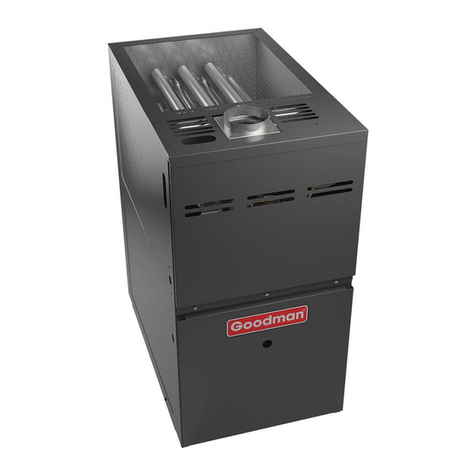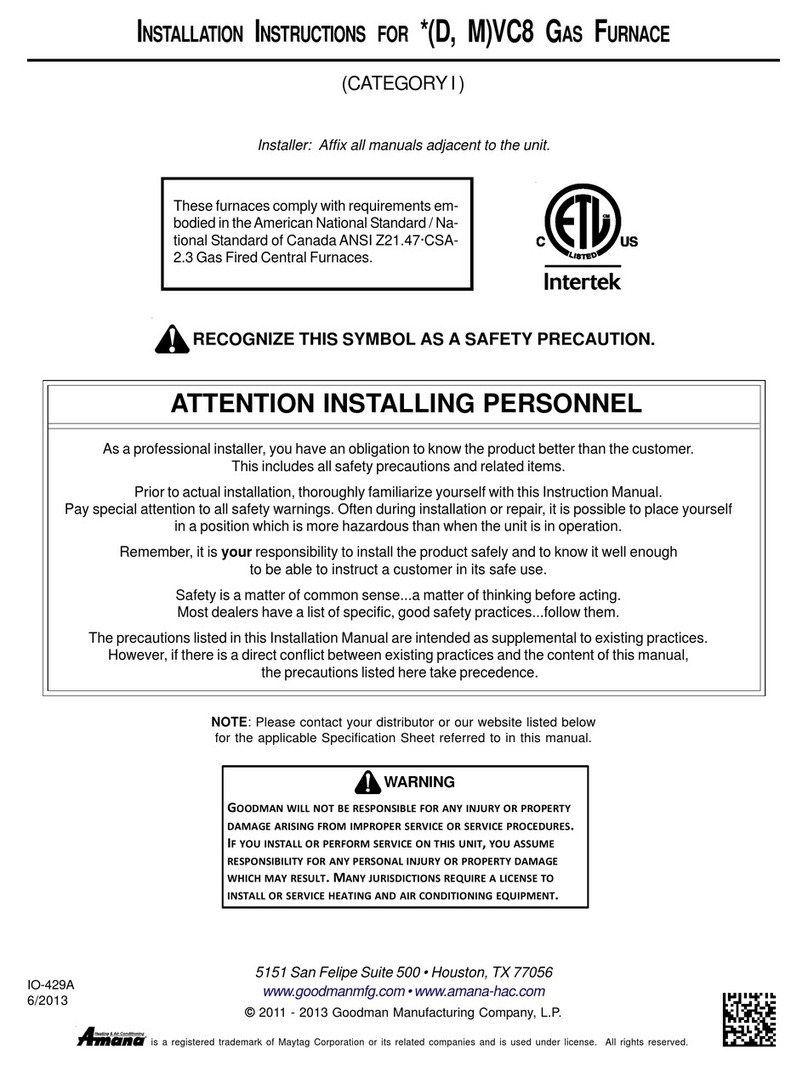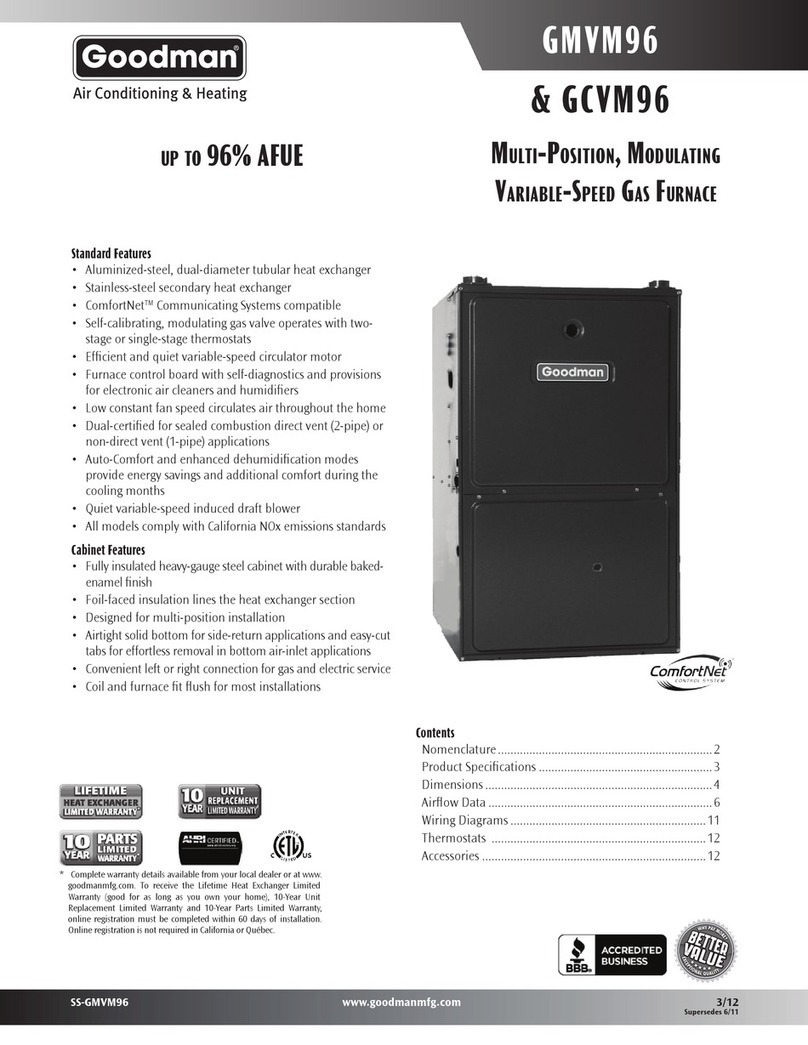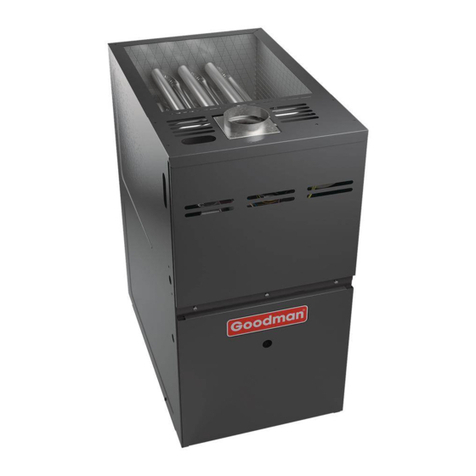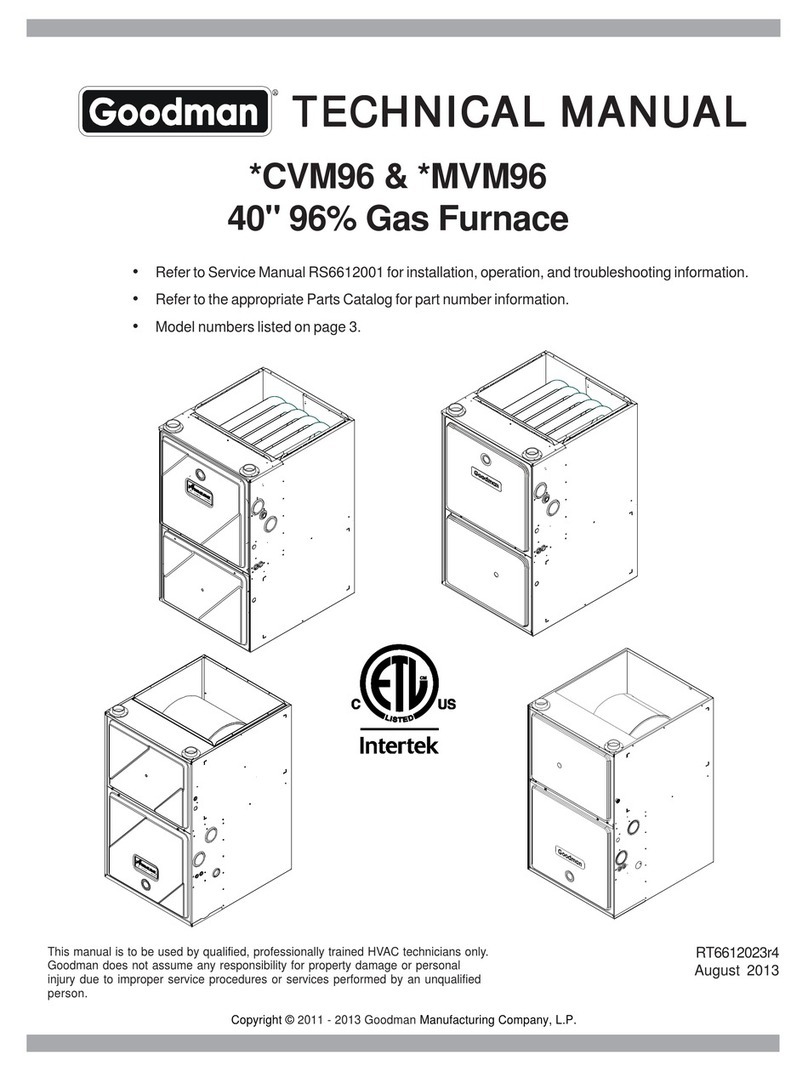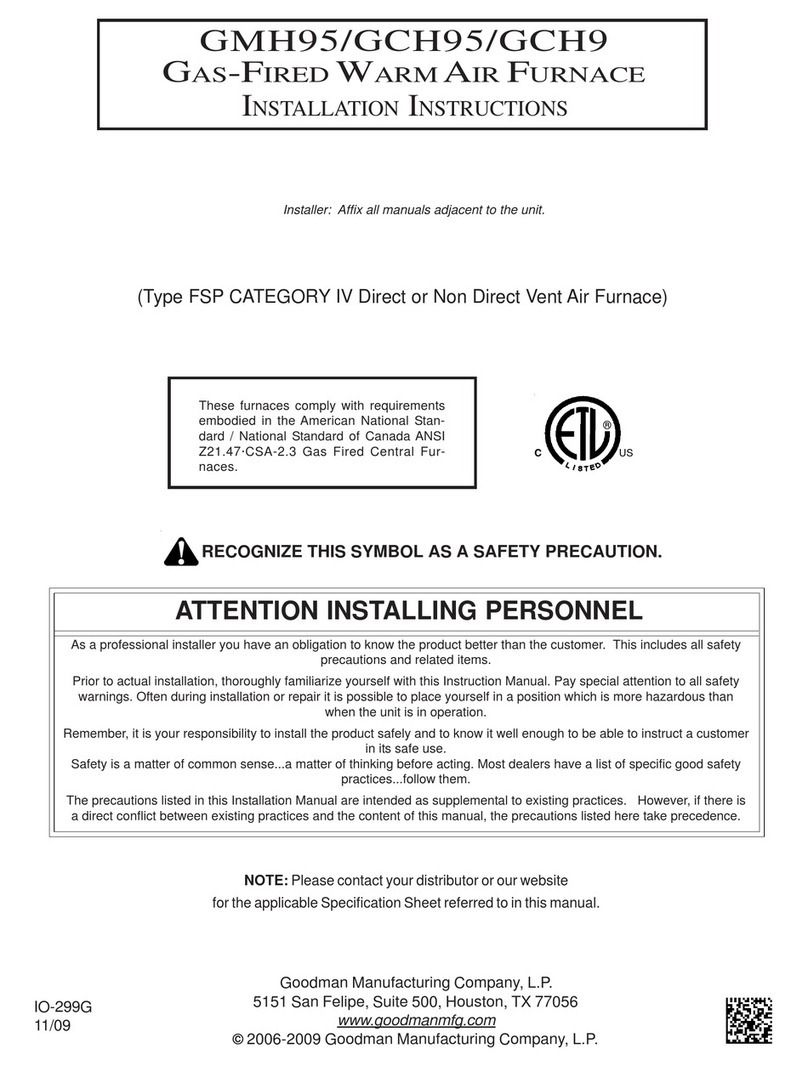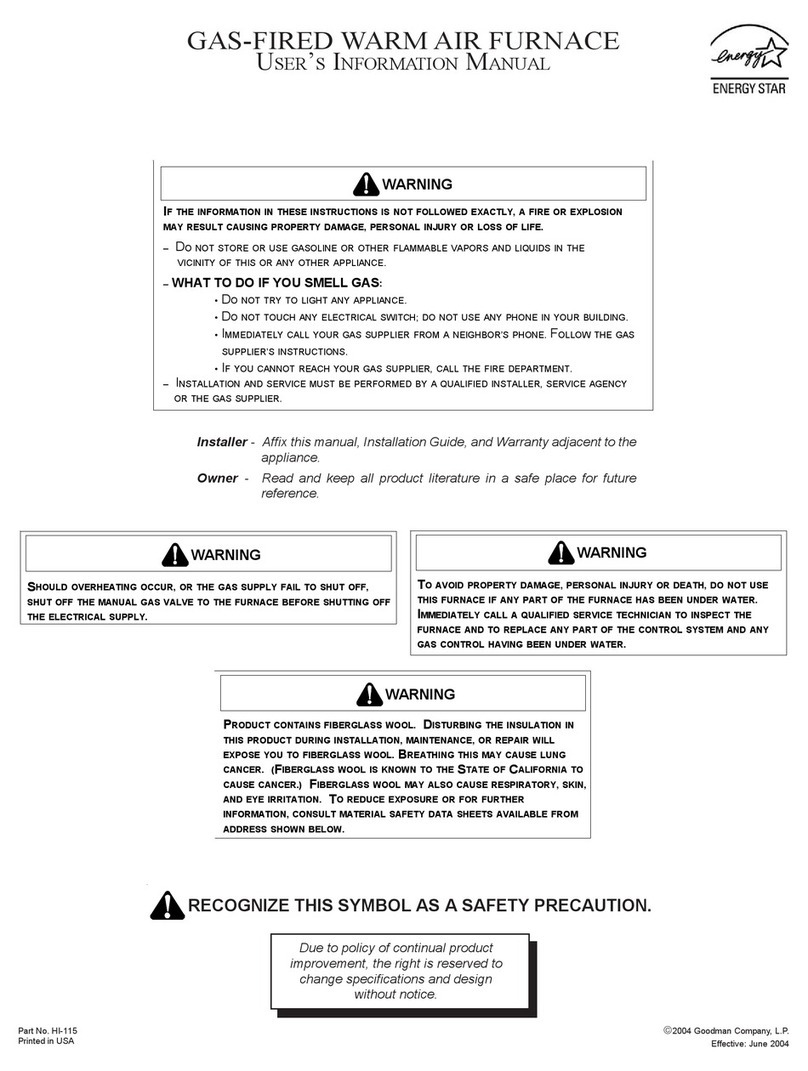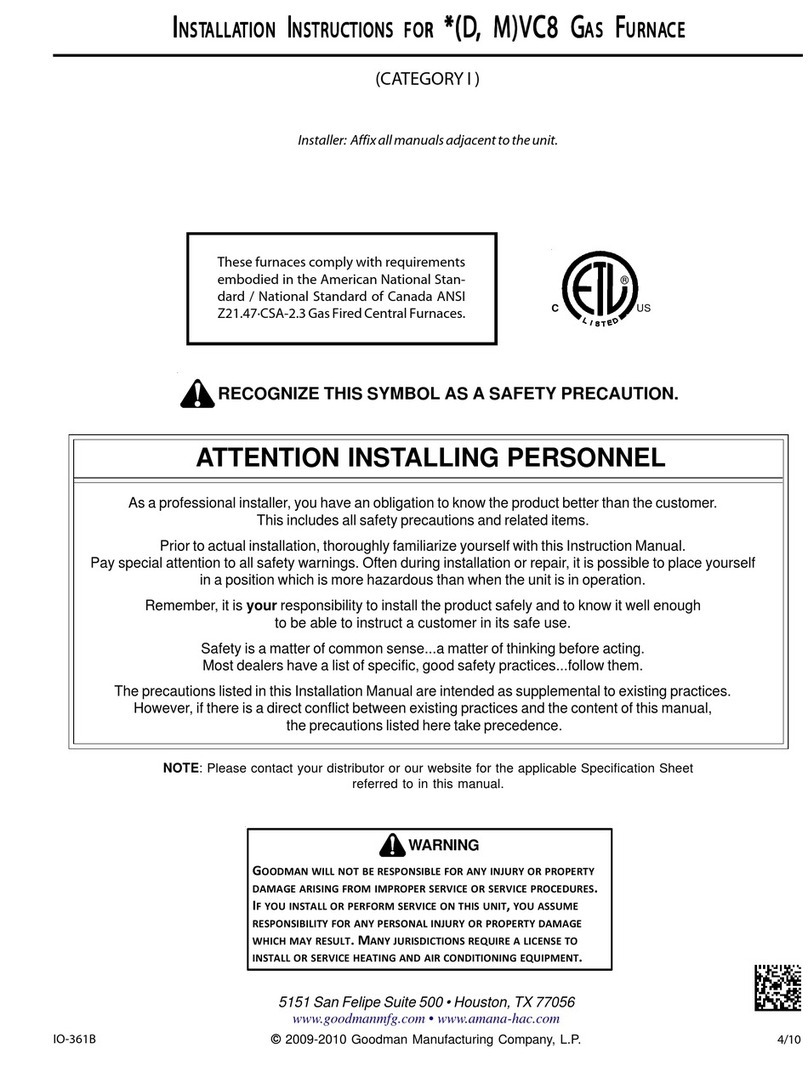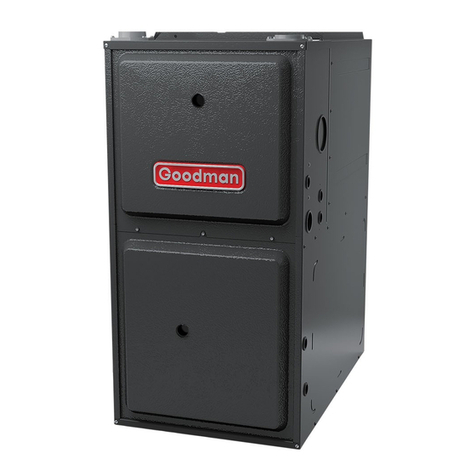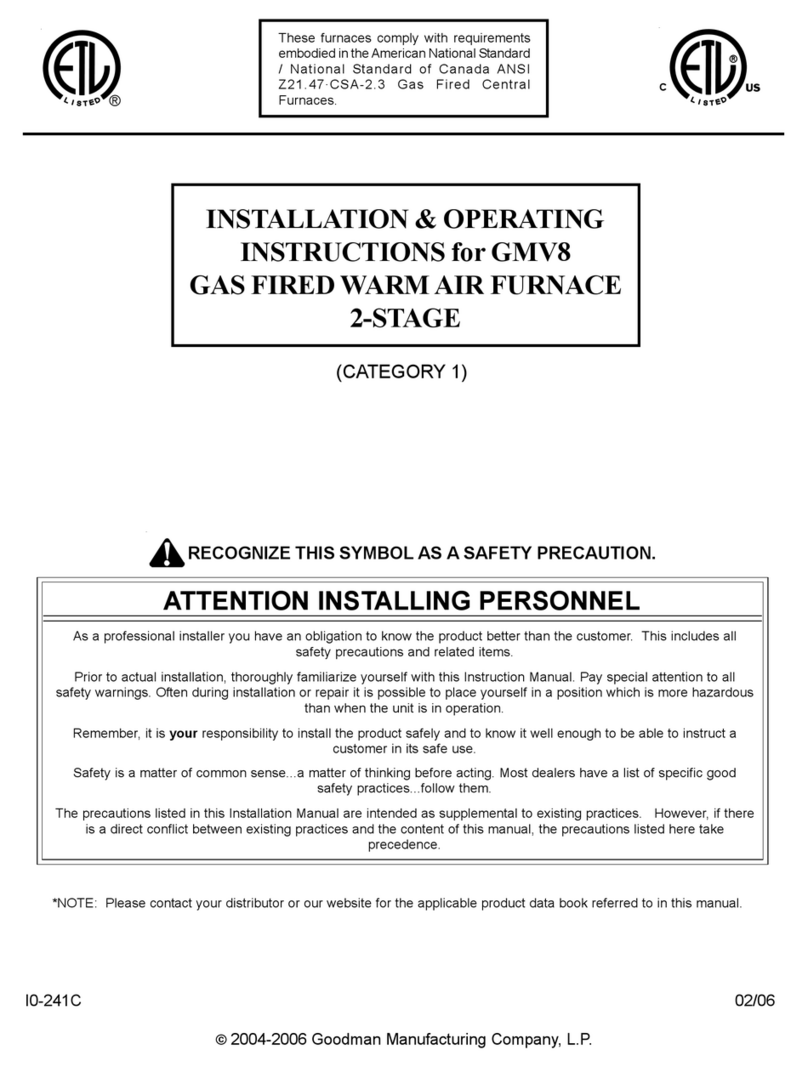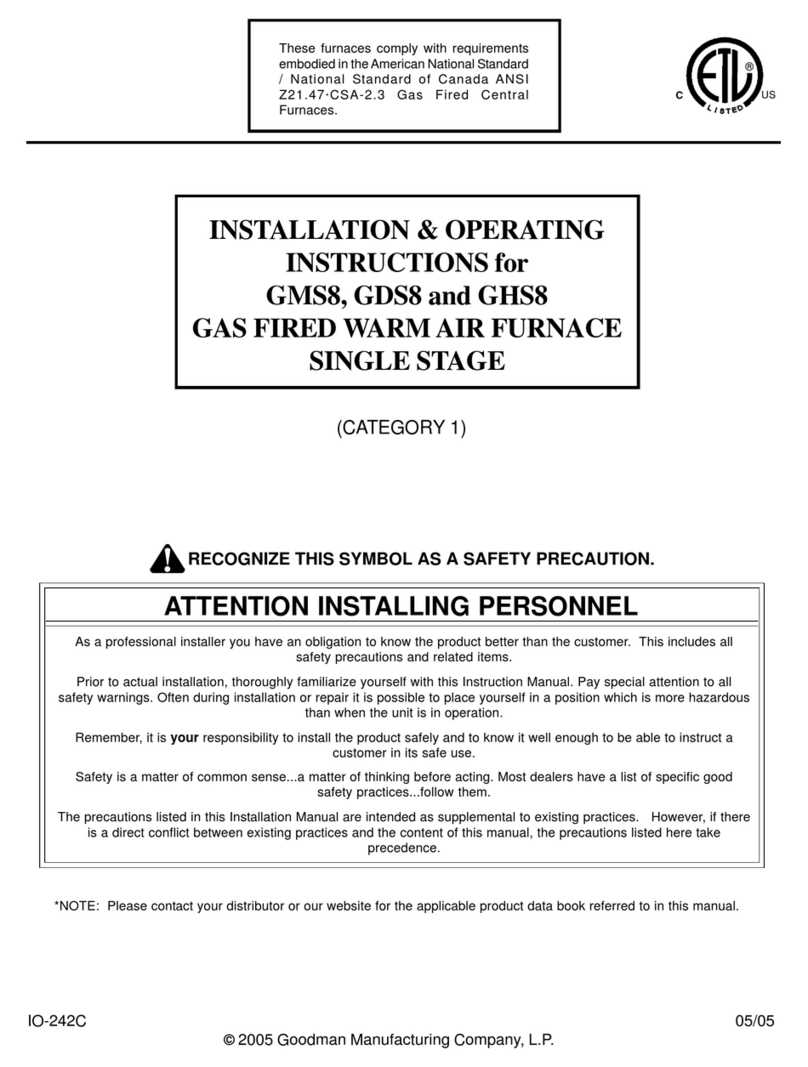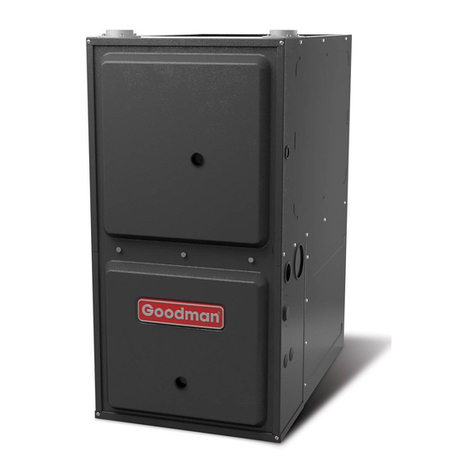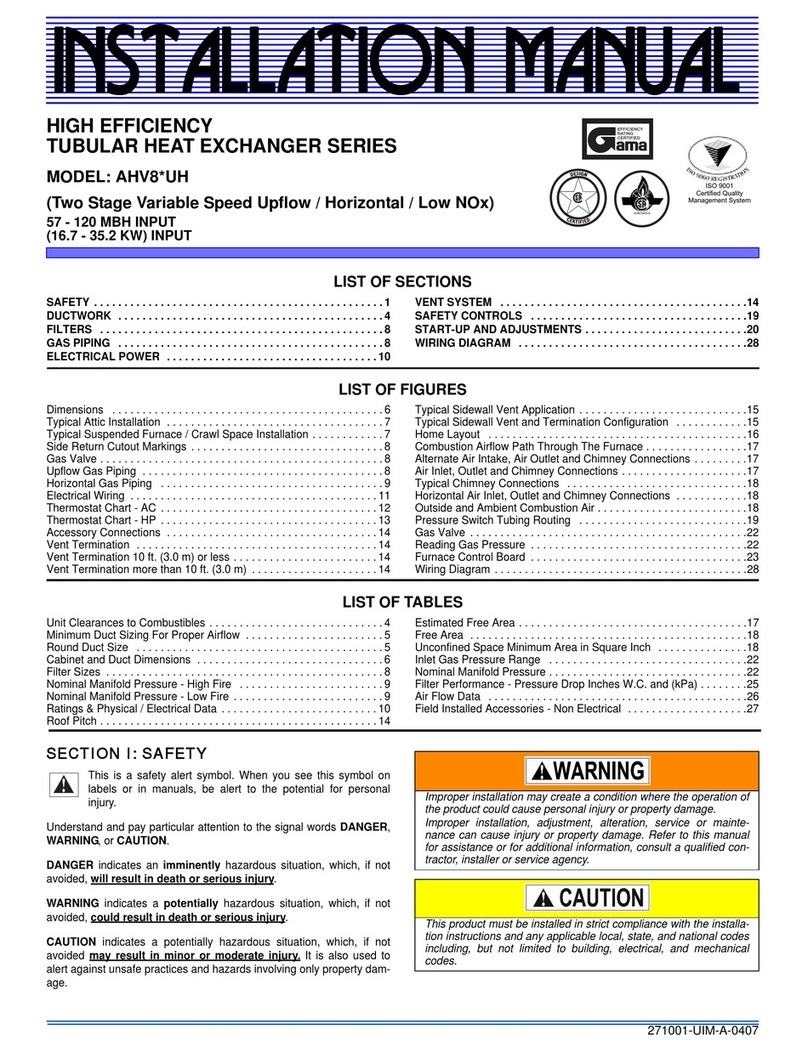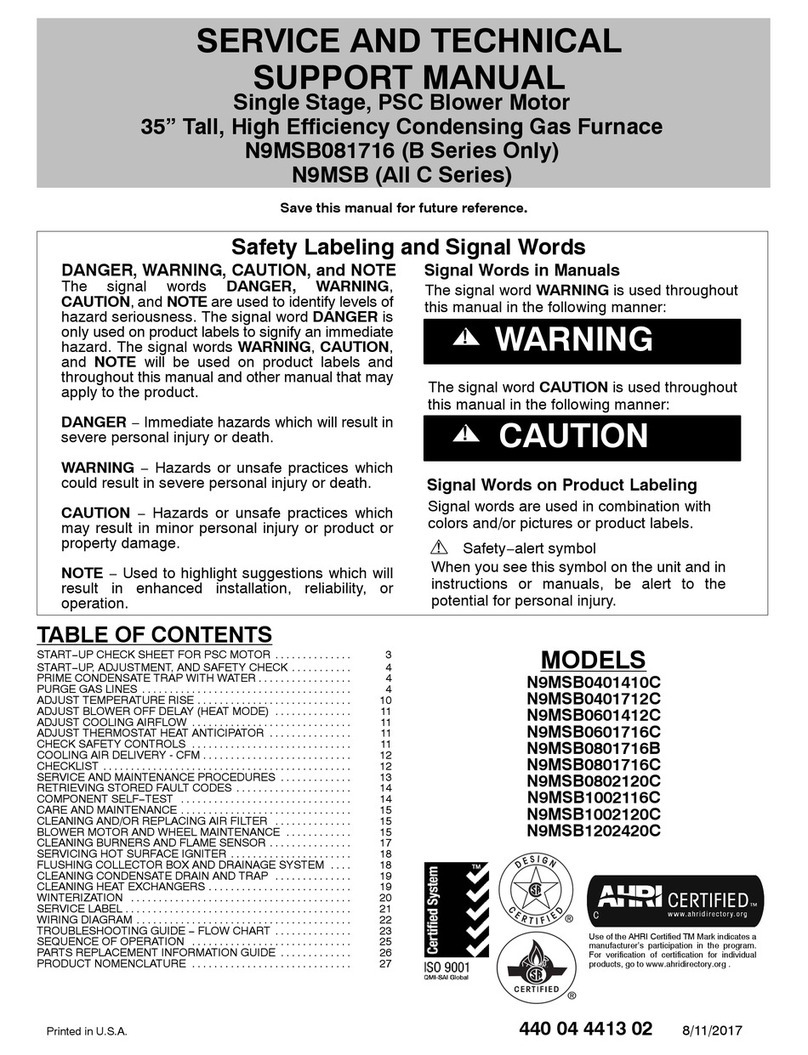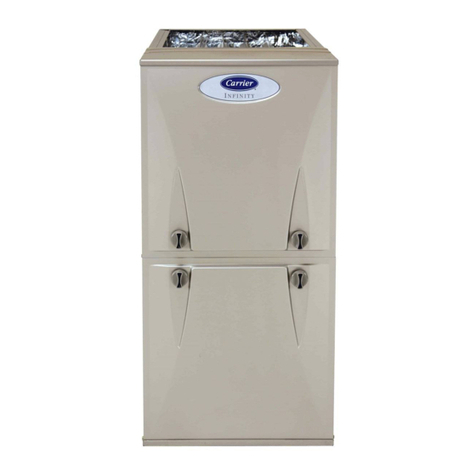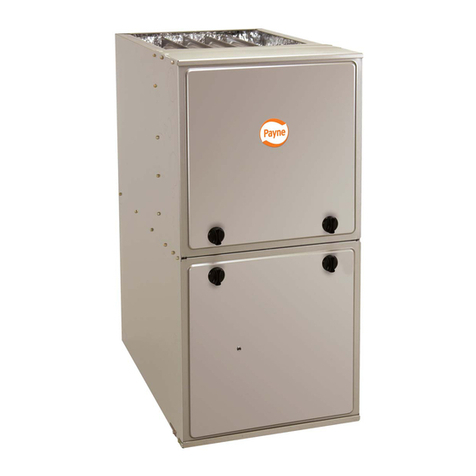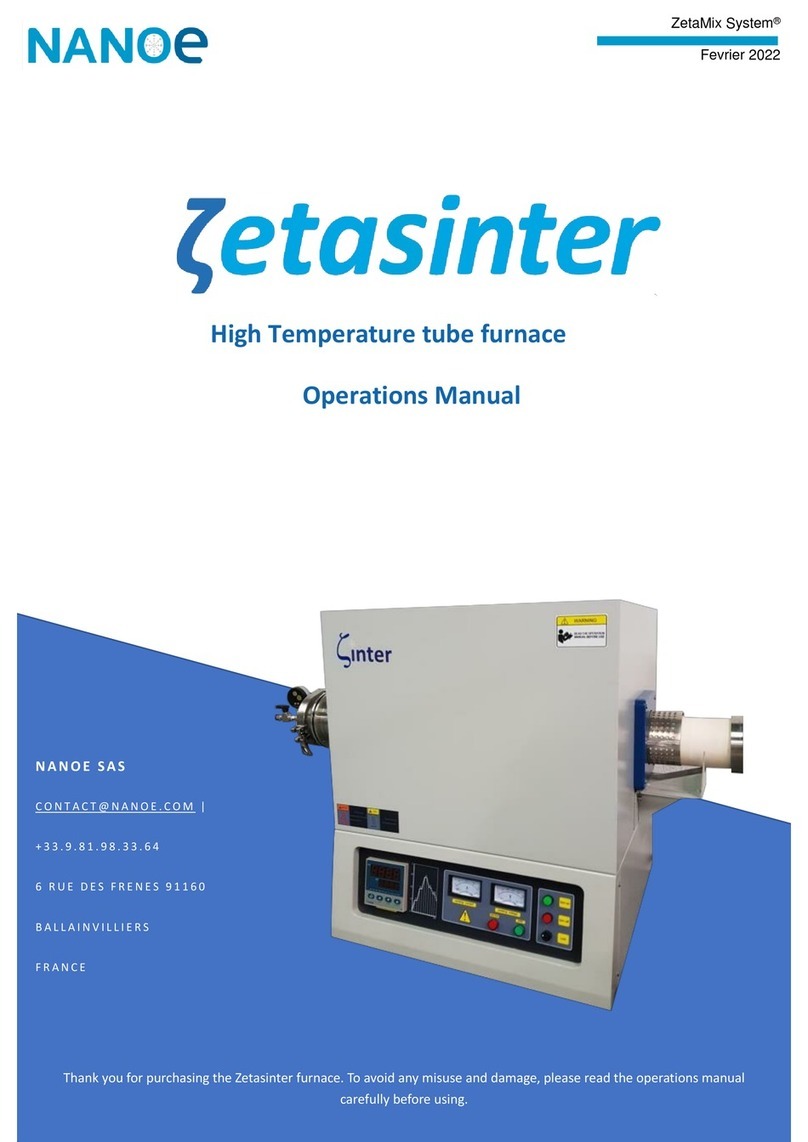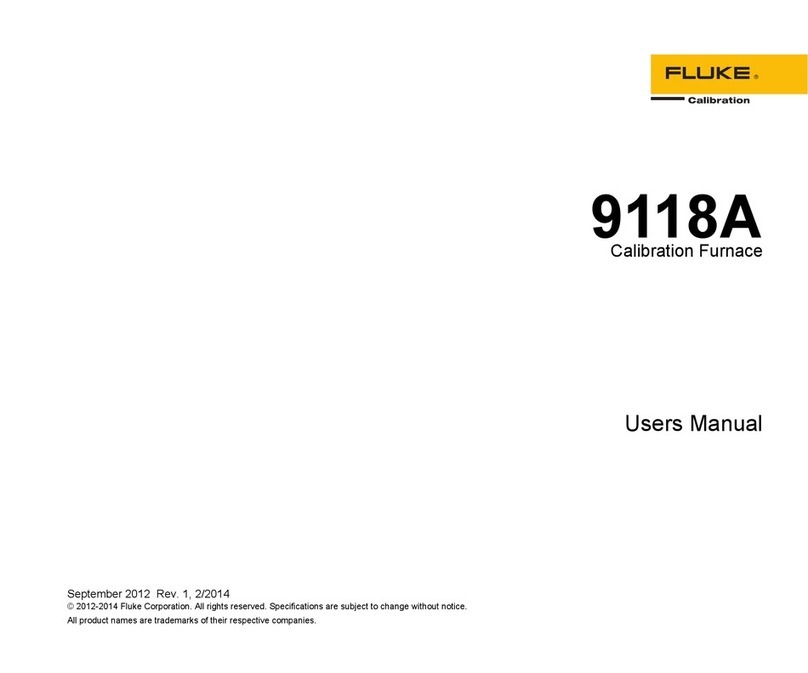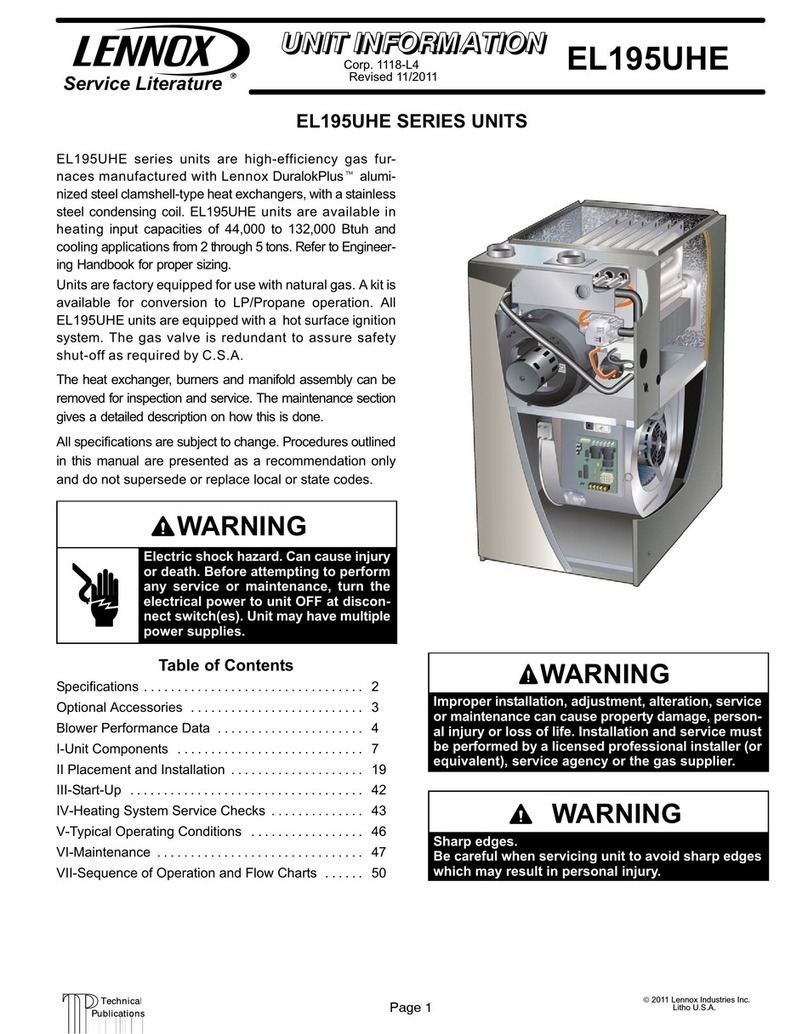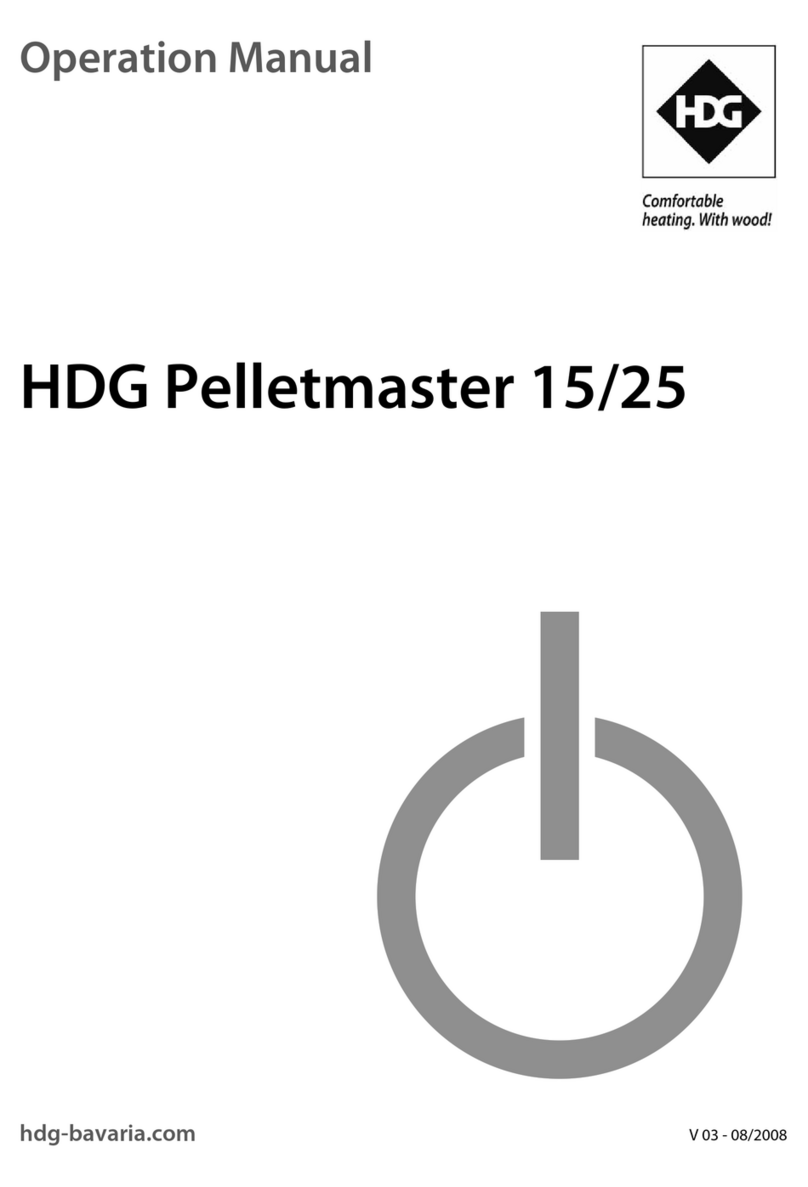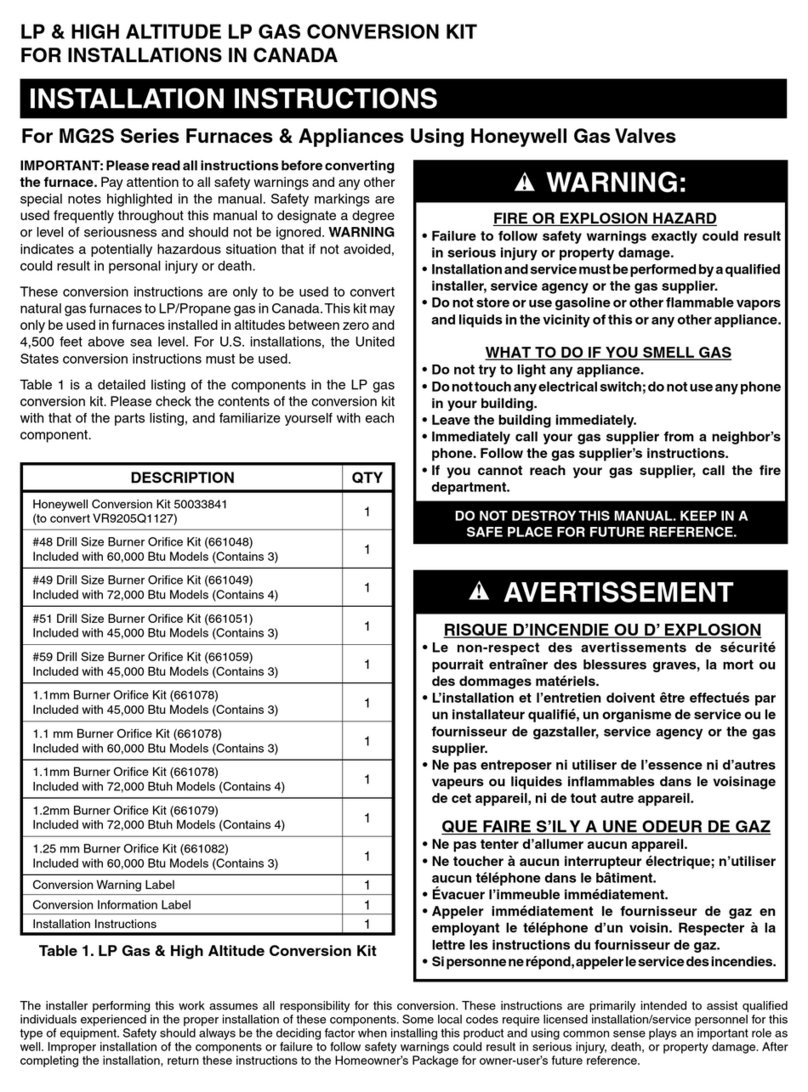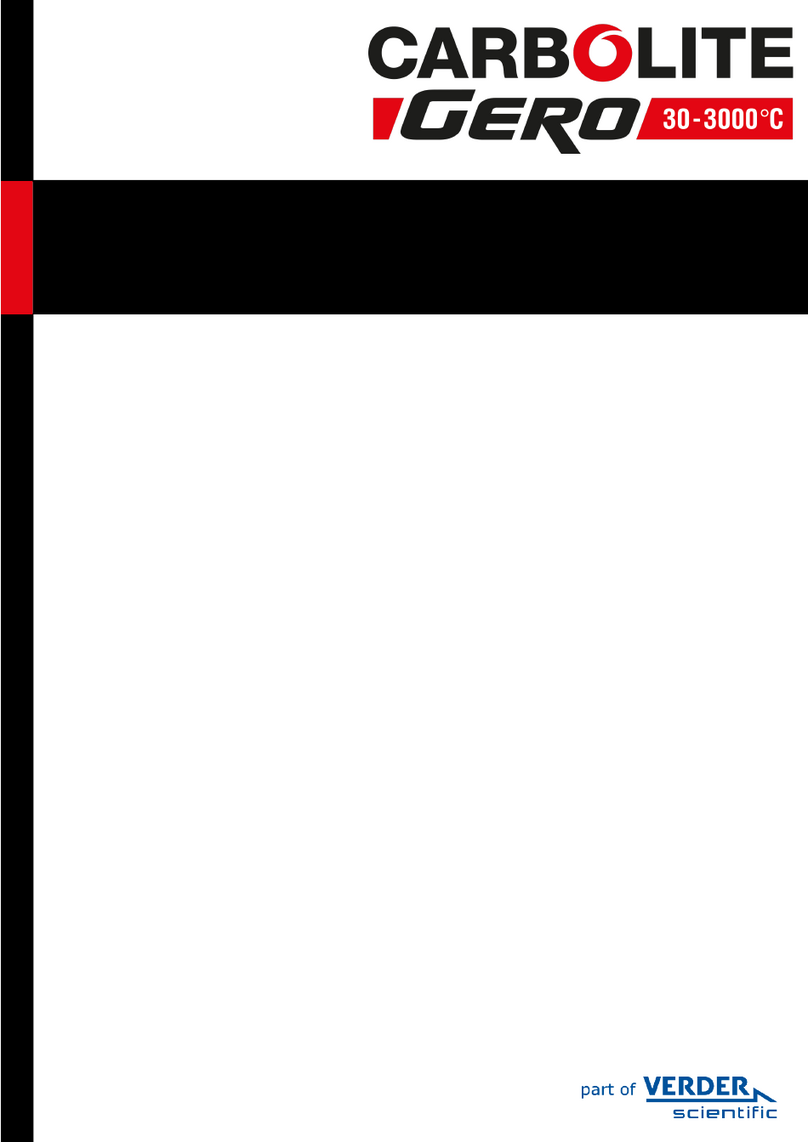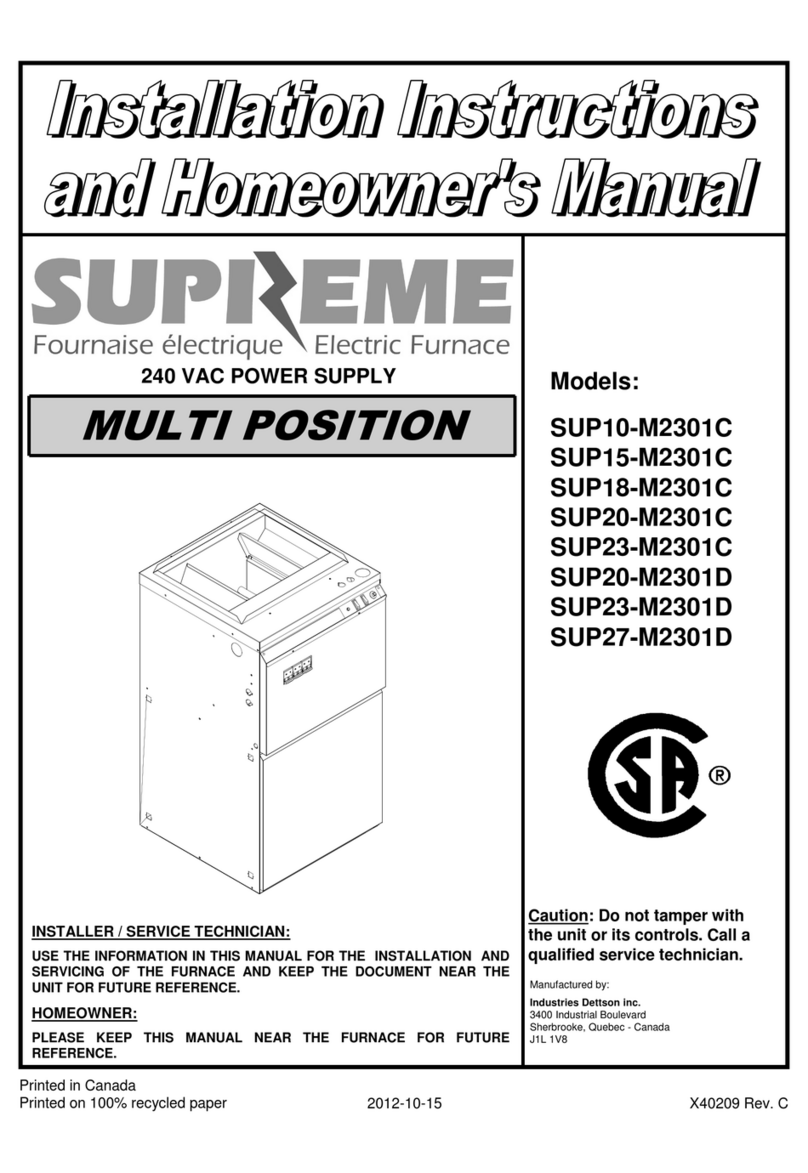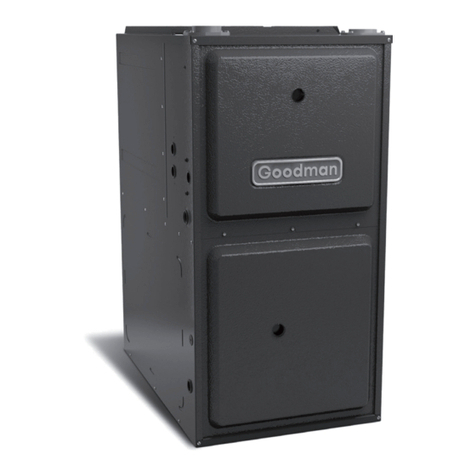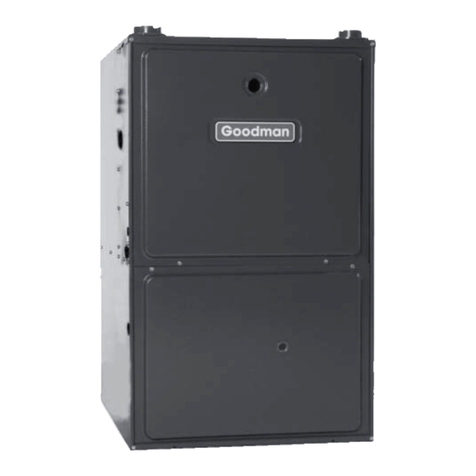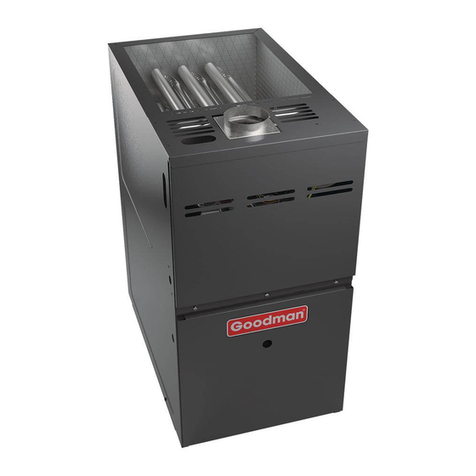
OPERATIONS INSTRUCTIONS
10
Introduction
Thisisa Category lV furnace. This furnace usesa pressur-
izedventingsystemandmustbeinstalledper National and
local codes requirements and the installation manual that
wasshippedwiththefurnace.
The *MEC96 34.5" furnace is one of the products in our
newlyredesigned lineofshorterchassis furnaces. Itisavail-
ableinthefollowingsizesandsuitableforupflow/horizon-
tal installation.
*MEC960303ANA *CEC960402BNAA
*MEC960403ANA *CEC960603BNAA
*MEC960603ANA *CEC960803BNAA
*MEC960302BNA *CEC961005CNAA
*MEC960402BNA Suitable for counter
*MEC960603BNA flow or horizontal
*MEC960803BNA installation.
*MEC960804CNA
*MEC961004CNA
*MEC961005CNA
*MEC961205DNA
Safety
Pleaseadhere to the following warnings andcautionswhen
installing,adjusting,altering,servicing,oroperating the fur-
nace.
TO PREVENT PERSONAL INJURY OR DEATH DUE TO IMPROPER INSTALLATION,
ADJUSTMENT, ALTERATION, SERVICE OR MAINTENANCE, REFER TO THIS
MANUAL. FOR ADDITIONAL ASSISTANCE OR INFORMATION, CONSULT A
QUALIFIED INSTALLER, SERVICE AGENCY OR THE GAS SUPPLIER.
WARNING
WARNING
THIS PRODUCT CONTAINS OR PRODUCES A CHEMICAL OR CHEMICALS WHICH
MAY CAUSE SERIOUS ILLNESS OR DEATH AND WHICH ARE KNOWN TO THE
STATE OF CALIFORNIA TO CAUSE CANCER, BIRTH DEFECTS OR OTHER
REPRODUCTIVE HARM.
WARNING
TO PREVENT POSSIBLE PROPERTY DAMAGE, PERSONAL INJURY OR DEATH
DUE TO ELECTRICAL SHOCK, THE FURNACE MUST BE LOCATED TO PROTECT
THE ELECTRICAL COMPONENTS FROM WATER.
Charge(ESD)Precautions
NOTE: Discharge body’s static electricity before touching
unit.Anelectrostaticdischargecanadverselyaffectelectri-
calcomponents.
Usethefollowingprecautionsduringfurnaceinstallation and
servicingto protect theintegratedcontrolmodule from dam-
age. By putting the furnace, the control, and the person at
thesameelectrostatic potential, these steps will help avoid
exposingtheintegrated control module to electrostatic dis-
charge. This procedure is applicable to both installed and
uninstalled(ungrounded)furnaces.
1. Disconnect all power to the furnace. Do not touch the
integrated control module or any wire connected to the
control prior to discharging your body’s electrostatic
chargeto ground.
2. Firmly touch a clean, unpainted, metal surface of the
furnace near the control. Any tools held in a person’s
handduring grounding will be discharged.
3. Service integrated control module or connecting wiring
following the discharge process in Step 2. Use caution
nottorecharge your body with static electricity;(i.e., do
notmove or shuffle your feet,do nottouch ungrounded
objects,etc.). Ifyoucomein contactwithanungrounded
object,repeat Step 2 before touching control orwires.
4. Dischargeany static electricityfromyour body toground
beforeremoving a newcontrolfromits container. Follow
Steps 1 through 3 if installing the control on a furnace.
Returnany old ornewcontrolsto their containers before
touchinganyungrounded object.
Product Application
This product is designed for use as a residential home gas
furnace.Itisnot designedorcertified foruse inmobile home,
trailer,orrecreationalvehicle applications.
This furnace can be used in the following non-industrial
commercial applications: Schools, Office buildings, Churches,
Retail stores, Nursing homes, Hotels/motels, Common or
office areas. In such applications, the furnace must be installed
with the installation instructions.
The*MEC96furnacesare ETL certified appliances and are
appropriate for use with natural or propane gas. (NOTE: If
usingpropanegas,apropaneconversionkitisrequired).
*MEC96furnacesare dual certified.
Dualcertificationmeans that the combustion air inlet pipeis
optionalandthe furnace can be vented as a:
Non-directvent (singlepipe)central forcedairfurnace
in which combustion air is taken from the installation
areaor from air ducted from the outsideor,
Directvent(dualpipe)centralforcedairfurnaceinwhich
allcombustionairsupplieddirectlytothe furnaceburn-
ers through a special air intake system outlined in
this manual and the installation instructions.
Toensureproper installation, operation and servicing, thor-
oughlyreadtheinstallationand service manuals for specif-
icspertainingto the installation, servicing and application of
this product.
WARNING
POSSIBLE PROPERTY DAMAGE, PERSONAL INJURY OR DEATH DUE TO FIRE,
EXPLOSION, SMOKE, SOOT, CONDENSTAION, ELECTRICAL SHOCK OR CARBON
MONOXIDE MAY RESULT FROM IMPROPER INSTALLATION, REPAIR, OPERATION,
OR MAINTENANCE OF THIS PRODUCT.
